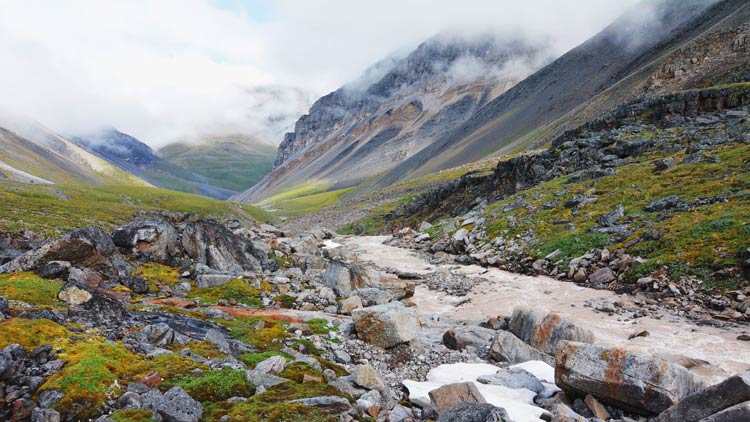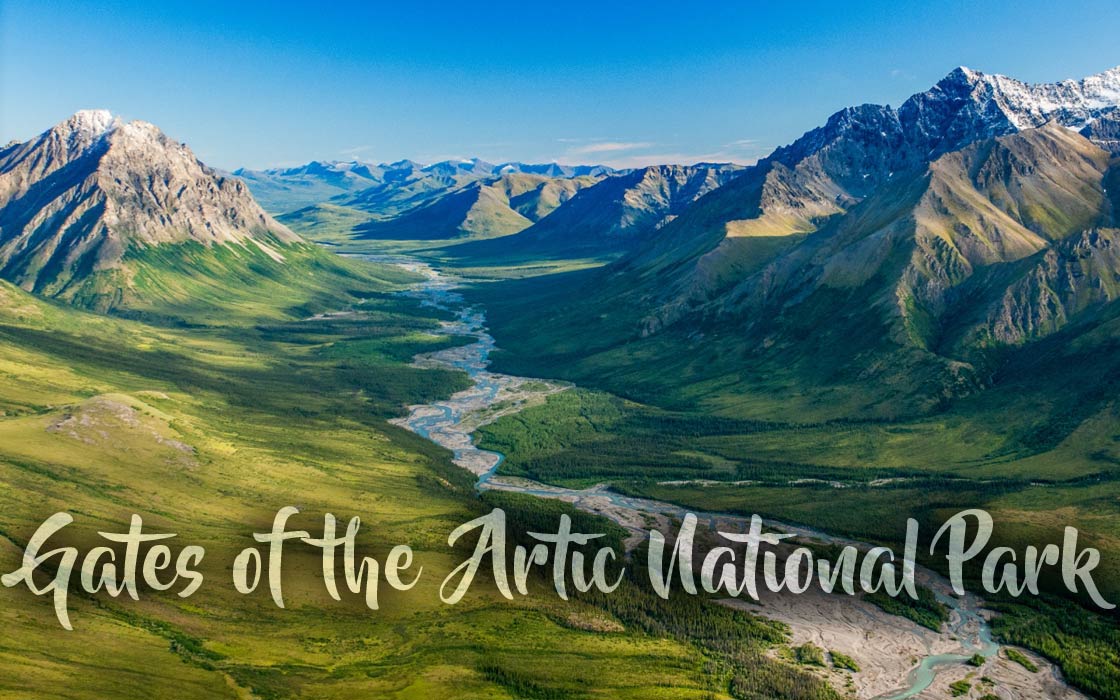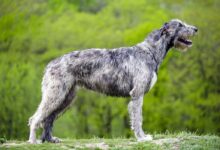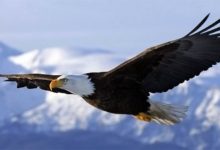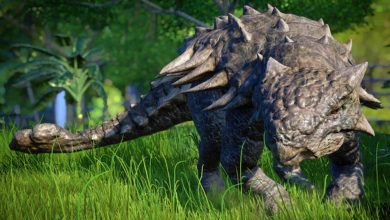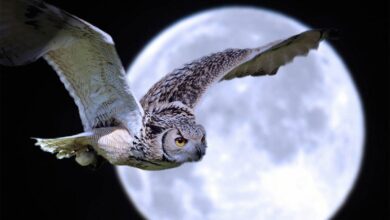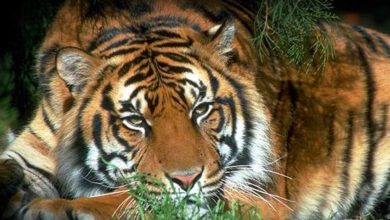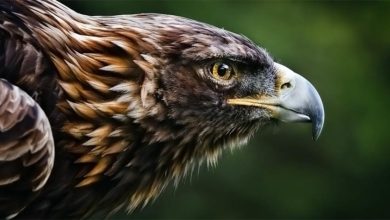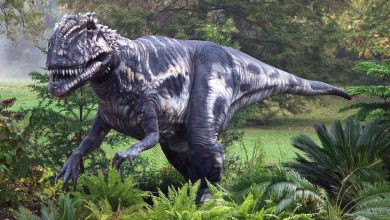Gates of the Arctic National Park and Preserve
The Gates of the Arctic National Park and Preserve, located in Alaska, is a place where nature reigns supreme and adventure awaits at every turn. Covering over 8 million acres (13,238 square miles (34,296 square kilometers)) of rugged wilderness, this park is home to some of the last untouched landscapes in the United States. From towering mountains and glaciers to pristine rivers and vast tundra, the Gates of the Arctic offers a true escape from the modern world. With no roads or established trails, visitors must rely on their own skills and determination to explore this rugged terrain and discover its hidden wonders. Whether you’re a seasoned backcountry explorer or a curious traveler seeking new experiences, the Gates of the Arctic is a place that will take your breath away.
The Gates of the Arctic National Park and Preserve is a land of infinite wonder, a place where the rugged beauty of the Arctic landscape is on full display. Nestled in the far northern reaches of Alaska, this vast wilderness area is one of the most remote and pristine places in the world. Here, towering mountains rise up from endless tundra, vast rivers carve their way through ancient valleys, and the Northern Lights dance in the sky above.
This is a land where time seems to stand still, where the natural world is both incredibly beautiful and incredibly harsh. The park is home to some of the most unique and untouched wilderness areas in the world, with a diverse range of ecosystems and wildlife that are found nowhere else on Earth.
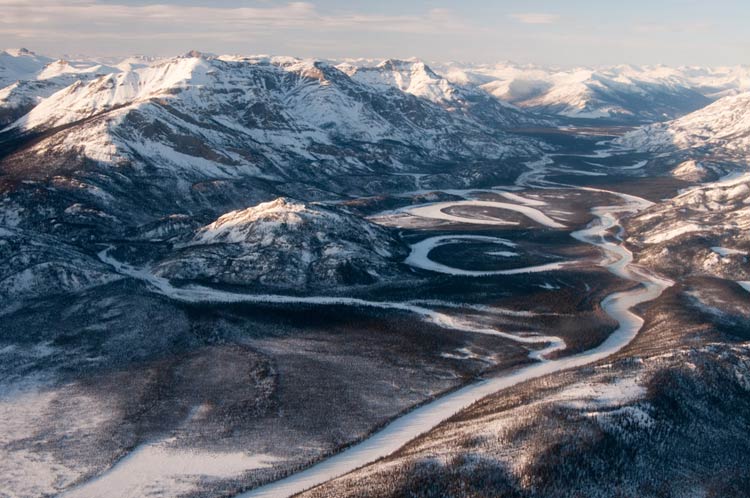
Whether you’re an intrepid adventurer looking to explore the farthest reaches of the Arctic or a nature lover seeking peace and solitude in one of the most pristine environments on the planet, the Gates of the Arctic National Park and Preserve is a must-see destination.
Visitors to the park can experience a wide range of activities, from hiking and backpacking in the rugged backcountry to fishing and hunting for arctic species such as Dolly Varden trout and caribou. Wildlife viewing opportunities abound, with the chance to spot grizzly and black bears, wolves, wolverines, and a variety of bird species that call the Arctic home.
For those seeking an even greater challenge, the park offers some of the most remote and wild river trips in North America, with the chance to paddle through some of the most pristine wilderness areas in the world.
With its stunning natural beauty, unique wildlife, and remote location, the Gates of the Arctic National Park and Preserve is a true wonder of the world, a place where the spirit of adventure and the beauty of nature combine to create an unforgettable experience.
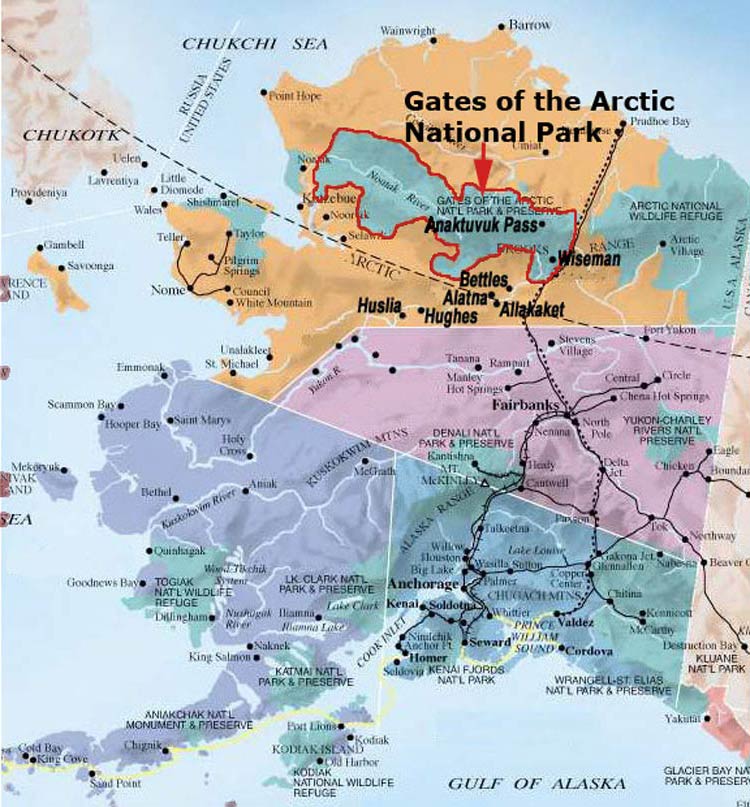
Location
The Gates of the Arctic National Park and Preserve is located in the northern region of Alaska, United States. It is located above the Arctic Circle and encompasses much of the Brooks Range mountain system. The park is approximately 150 miles (240 km) east of Kotzebue and can only be accessed by small aircraft or by foot. The closest communities to the park are Anaktuvuk Pass and Bettles.
Basic Facts About Gates of the Arctic National Park and Preserve
- Established
The park was established on December 2, 1980. - Location
The park is located in the northern region of Alaska, above the Arctic Circle. - Area
The park covers an area of approximately 13,238 square miles (34,296 square km). - Accessibility
There are no roads that lead into the park, and visitors must fly into the park or hike in. - Wildlife
The park is home to a variety of wildlife, including grizzly bears, wolves, caribou, moose, and many species of birds. - Terrain
The terrain in the park is diverse, including glaciers, tundra, and rugged mountain ranges. - Activities
Visitors can participate in backcountry hiking, camping, fishing, and hunting (with proper permits). Winter activities include cross-country skiing, snowshoeing, and dog sledding. - Climate
The park has a subarctic climate with long, harsh winters and short, cool summers. Average temperatures in the summer months range from 40-60°F (5-15°C), while in the winter temperatures can drop below -40°F (-40°C).
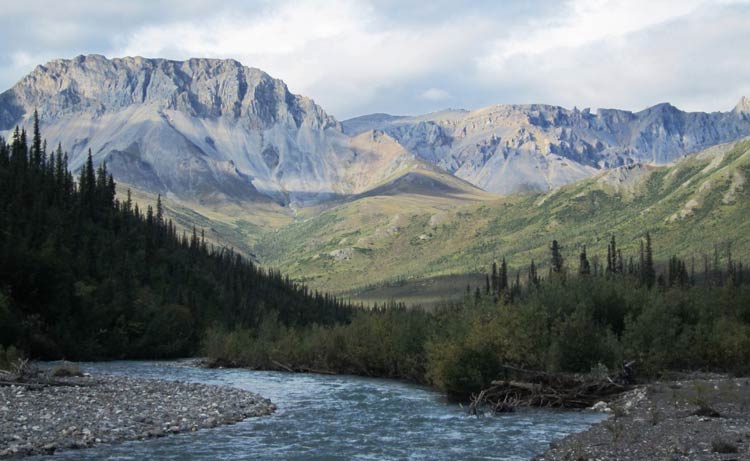
History and Name of the Park
The Gates of the Arctic National Park and Preserve is named after the Brooks Range, a mountain system that runs through the heart of the park. The range is called the “Gates of the Arctic” because it has been historically used as a travel route by Alaska Natives and early explorers to access the interior of Alaska.
The park has a rich cultural history, with evidence of human habitation in the region dating back thousands of years. The area is home to several Alaska Native groups, including the Inupiaq and the Gwich’in, who have relied on the land for subsistence hunting and fishing for generations.
The creation of the park was the result of decades of work by conservationists and Alaskan residents who sought to protect the unique and pristine wilderness of the Brooks Range. After several attempts to designate the area as a protected wilderness, the Gates of the Arctic National Park and Preserve was finally established by the Alaska National Interest Lands Conservation Act in 1980.

Geography
The Gates of the Arctic National Park and Preserve is located in the northern region of Alaska and covers a vast area of rugged wilderness above the Arctic Circle. The park encompasses much of the Brooks Range mountain system, which includes several peaks over 8,000 feet (2,400 meters) in elevation.
The terrain in the park is diverse, with glaciers, tundra, and rugged mountain ranges. The park is also home to several rivers, including the Noatak, the Kobuk, and the Koyukuk, which provide important habitats for fish and wildlife.
The climate in the park is subarctic, with long, harsh winters and short, cool summers. Average temperatures in the summer months range from 40-60°F (5-15°C), while in the winter temperatures can drop below -40°F (-40°C). Precipitation in the park is low, with most of the moisture falling as snow.
Due to its remote location and lack of roads, the Gates of the Arctic National Park and Preserve is one of the least visited national parks in the United States. However, it is a popular destination for backcountry adventurers, hunters, and fishermen. The park offers visitors the chance to experience true wilderness and see some of the last remaining pristine landscapes in the country.
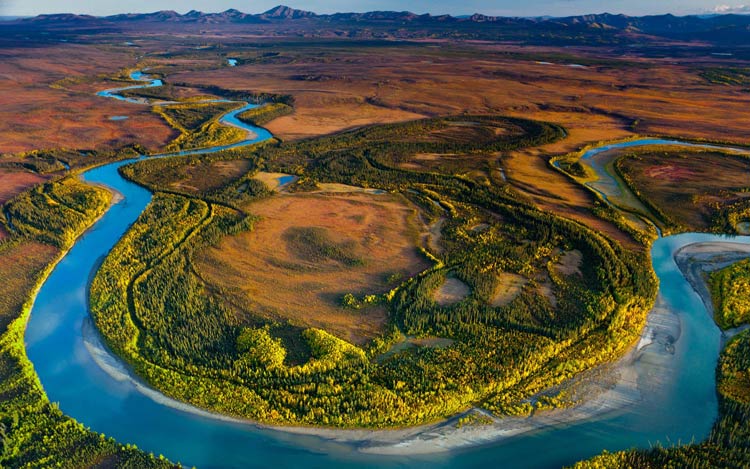
Features of the park
The Gates of the Arctic National Park and Preserve is home to a variety of unique and breathtaking features that make it a special place. Some of these features include:
- Rugged Terrain
The park is characterized by its rugged terrain, including glaciers, tundra, and mountain ranges. - Pristine Wilderness
With no roads and limited development, the park is one of the last remaining wilderness areas in the United States. - Rich Wildlife
The park is home to a variety of wildlife, including grizzly bears, wolves, caribou, moose, and many species of birds. - Cultural Significance
The park has a rich cultural history, with evidence of human habitation in the region dating back thousands of years. The area is home to several Alaska Native groups, who have relied on the land for subsistence hunting and fishing for generations. - Rivers and Streams
The park is home to several important rivers and streams, including the Noatak, the Kobuk, and the Koyukuk, which provide important habitats for fish and wildlife. - Nighttime Views
Due to its location above the Arctic Circle, the park is a great place to view the Northern Lights. - Winter Activities
The park is a popular destination for winter activities, including cross-country skiing, snowshoeing, and dog sledding. - Unique Flora
The park is home to a variety of unique flora, including arctic wildflowers, mosses, and lichens.
The Gates of the Arctic National Park and Preserve is a place of unspoiled beauty and natural wonder, offering visitors a true escape from the modern world and a chance to experience true wilderness.
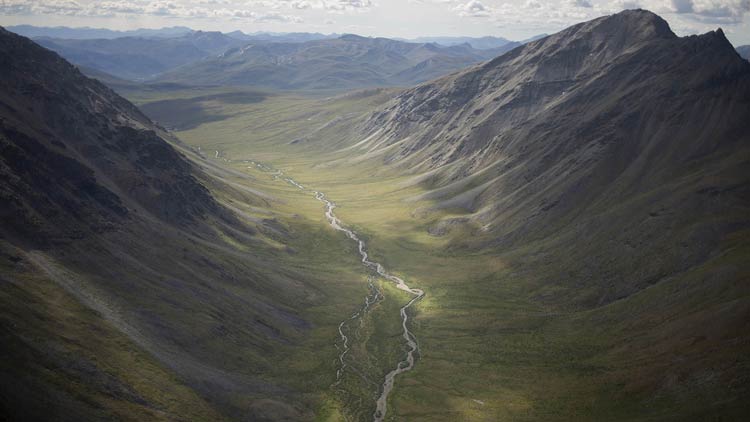
Geology
The Gates of the Arctic National Park and Preserve is located in the northern region of Alaska and is characterized by its rugged terrain, including glaciers, tundra, and mountain ranges. The park is part of the larger Brooks Range mountain system, which includes several peaks over 8,000 feet (2,400 meters) in elevation.
The geology of the park is dominated by sedimentary and metamorphic rocks, including sandstone, shale, and marble. These rocks were formed from ancient sea beds and coastal plains that were uplifted and transformed by tectonic activity millions of years ago.
The park is also home to several glaciers, which have carved the landscape and left behind distinctive features, such as U-shaped valleys and glacial lakes. The glaciers in the park are remnants of the last ice age, which ended about 11,700 years ago.
The surrounding areas of the park are also geologically significant, with several active fault lines and volcanic systems located in the region. The Brooks Range is part of the larger Alaska Range, which includes North America’s highest peak, Mount McKinley (Denali), and several other large volcanoes.
Overall, the geology of the Gates of the Arctic National Park and Preserve provides a unique and fascinating glimpse into the natural forces that have shaped the landscape of Alaska and the surrounding regions.
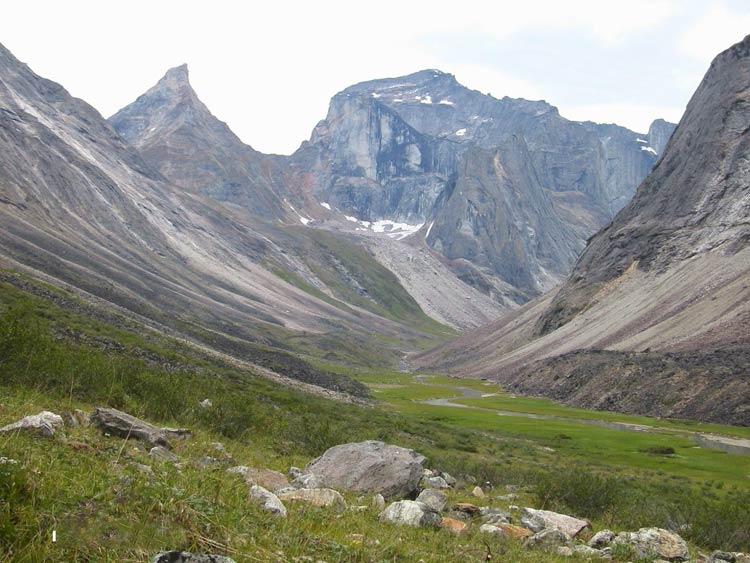
Climate
The climate in the Gates of the Arctic National Park and Preserve is subarctic, with long, harsh winters and short, cool summers. Average temperatures in the summer months (July and August) range from 5-15°C (40-60°F), while in the winter (December to March) temperatures can drop below -40°C (-40°F). Precipitation in the park is low, with most of the moisture falling as snow.
Due to its location above the Arctic Circle, the park experiences long periods of darkness in the winter and long periods of sunlight in the summer. In the winter, the sun does not rise for several weeks, while in the summer it does not set for several weeks. These extreme variations in daylight can have a profound effect on the local flora and fauna.
Overall, the climate in the Gates of the Arctic National Park and Preserve can be challenging, with harsh temperatures and limited daylight, but it also provides a unique and unforgettable experience for visitors who are prepared for the conditions.

Flora in Gates of the Arctic National Park and Preserve
The Gates of the Arctic National Park and Preserve is home to a variety of unique and diverse flora that have adapted to the harsh subarctic climate. Some of the notable plants found in the park include:
- Tundra vegetation
The park is characterized by its vast expanses of tundra, which are dominated by low-growing shrubs, such as willows (Salix spp.), alders (Alnus spp.), and cranberries (Vaccinium spp.). - Arctic Wildflowers
Despite the harsh conditions, the park is also home to a variety of arctic wildflowers, including dwarf fireweed (Epilobium latifolium), arctic poppy (Papaver radicatum), and arctic forget-me-not (Eritrichium nanum). - Mosses and Lichens
Mosses and lichens are also common in the park and play an important role in the ecosystem, providing important habitats for insects and serving as a food source for some animals. - Deciduous Forests
Along the river valleys and in the southern part of the park, deciduous forests can be found, including black spruce (Picea mariana), white spruce (Picea glauca), and balsam poplar (Populus balsamifera).
The flora in the Gates of the Arctic National Park and Preserve provides a unique and beautiful window into the subarctic environment and the incredible resilience of life in this harsh and challenging landscape.
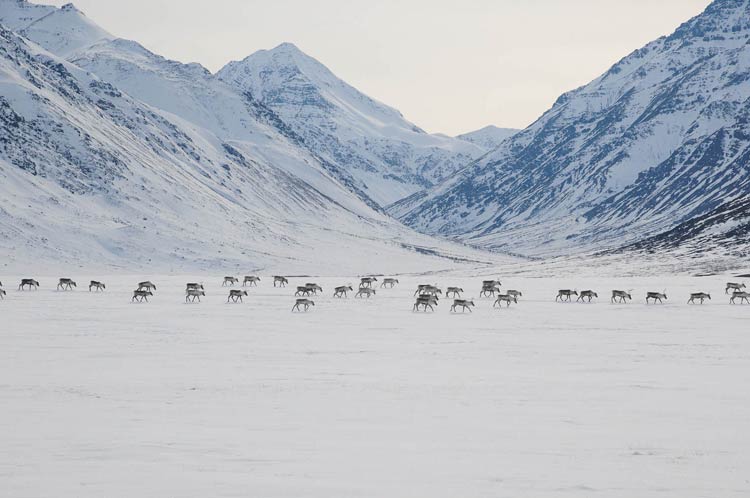
Fauna in Gates of the Arctic National Park and Preserve
The Gates of the Arctic National Park and Preserve is home to a diverse array of wildlife, including several species of mammals, birds, fish, and insects. Some of the notable species found in the park include:
- Caribou (Rangifer tarandus)
The park is home to the Central Arctic Caribou Herd, one of the largest herds of caribou in Alaska. - Grizzly bear (Ursus arctos horribilis)
The park is also home to a healthy population of grizzly bears, which can be seen in the river valleys and on the tundra. - Wolf (Canis lupus)
Wolves are a common predator in the park and play an important role in controlling populations of other animals, such as caribou and moose. - Dall sheep (Ovis dalli)
Dall sheep are often seen on the cliffs and mountain slopes in the park, where they feed on vegetation and escape from predators. - Arctic Fox (Vulpes lagopus)
The Arctic fox is well adapted to the subarctic climate, with thick fur and a keen sense of hearing that allows it to locate prey under the snow. - Birds
The park is also home to a variety of bird species, including peregrine falcons (Falco peregrinus), bald eagles (Haliaeetus leucocephalus), and gyrfalcons (Falco rusticolus).
The fauna in the Gates of the Arctic National Park and Preserve provides a unique and fascinating glimpse into the diversity of life in the subarctic and the incredible adaptations that allow these animals to thrive in this harsh environment.
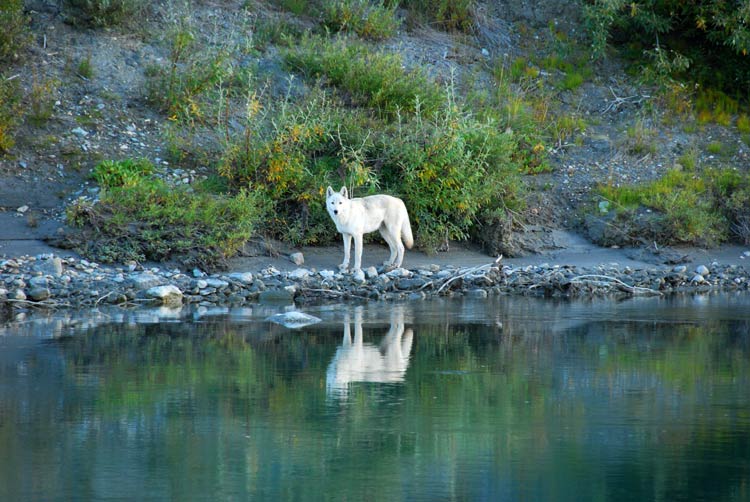
Tourism and tourist main attractions in the park
The Gates of the Arctic National Park and Preserve is a remote and rugged wilderness that attracts adventurous tourists seeking an authentic wilderness experience. The park is best known for its breathtaking scenic beauty, including:
- Vast Tundra Landscapes
The park is characterized by its vast expanses of rolling tundra, dotted with glaciers, rivers, and mountains. These landscapes provide a unique and unforgettable backdrop for outdoor activities such as hiking, camping, and wildlife viewing. - Majestic Mountains
The park is home to several mountain ranges, including the Brooks Range, which includes some of the tallest peaks in Alaska. These mountains offer opportunities for backpacking, rock climbing, and mountaineering for experienced hikers and climbers. - Clear Rivers and Streams
The park is also home to several clear and pristine rivers and streams, including the Noatak and Kobuk, which are popular for fishing and river-based activities such as rafting and kayaking. - Wildlife Viewing
The park is home to a wide variety of wildlife, including caribou, grizzly bears, wolves, and birds, making it a prime destination for wildlife viewing and photography. - Cultural History
The park is also rich in cultural history, with evidence of human habitation dating back thousands of years. Visitors can learn about the cultural heritage of the area by exploring the park’s many archaeological sites and cultural landmarks.
The Gates of the Arctic National Park and Preserve offers a unique and unforgettable wilderness experience for visitors who are prepared for the rugged conditions and willing to explore this remote and beautiful corner of Alaska.
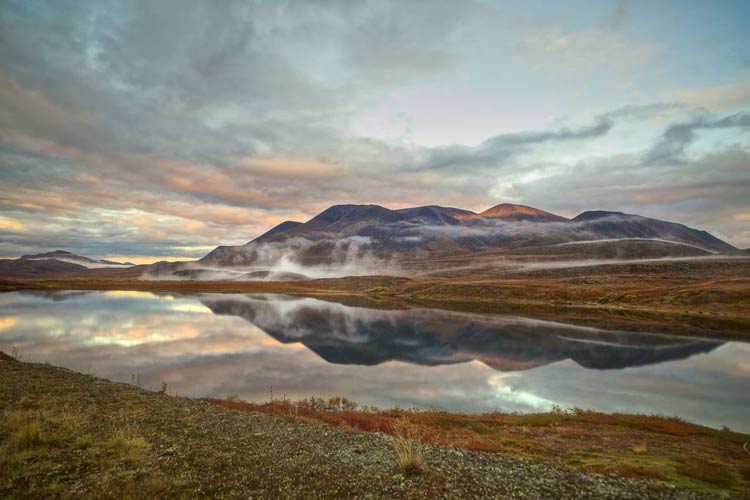
How To Reach To Gates of the Arctic National Park and Preserve?
Reaching the Gates of the Arctic National Park and Preserve can be challenging, as it is located in a remote area of northern Alaska and there are no roads leading into the park. Here are some common ways to reach the park:
- Air travel
The most common way to reach the park is by flying into one of the nearby communities, such as Anaktuvuk Pass, Bettles, or Kaktovik. From there, you can arrange a charter flight or take a scheduled flight to the park. - River travel
Another way to reach the park is by traveling along one of the rivers that flow through it, such as the Noatak River or the Kobuk River. This is a popular method for experienced wilderness travelers who are looking for a multi-day paddling or rafting trip. - Backpacking
For those looking for a more strenuous adventure, it is possible to reach the park by hiking overland from one of the nearby communities or through the Brooks Range. This is a challenging journey that requires advanced wilderness skills and a well-planned route.
Regardless of how you choose to reach the park, it’s important to be prepared for the rugged wilderness conditions and to carry all necessary gear and supplies, including food, shelter, and navigation equipment.
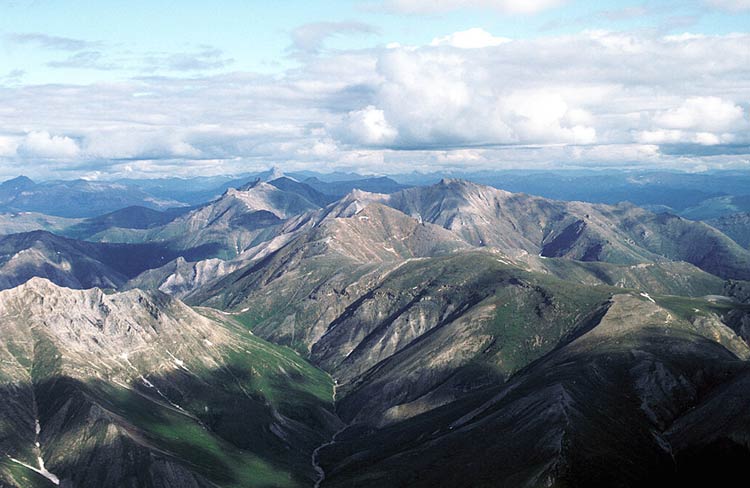
Best Time To Visit Gates of the Arctic National Park and Preserve
The best time to visit Gates of the Arctic National Park and Preserve is during the summer months of June through September, when the weather is milder and the daylight hours are longer. This is also when most of the park’s facilities, such as ranger stations and flights, are open and accessible to visitors. During these months, the average temperature ranges from 8°C (46°F) to 15°C (59°F), making it ideal for outdoor activities like hiking, fishing, and wildlife viewing.
Visitors who are interested in experiencing the unique winter conditions of the Arctic can also visit the park during the winter months, although access is limited and temperatures can be extremely cold, ranging from -40°C (-40°F) to -20°C (-4°F). Winter activities in the park include cross-country skiing, snowshoeing, and dog sledding.
Regardless of when you visit, it’s important to be prepared for the harsh and remote wilderness conditions of the Arctic, and to bring all necessary gear and supplies, including food, shelter, and navigation equipment.

Gates of the Arctic National Park and Preserve in numbers
- Area
The park covers an area of 8,472,506 acres (13,238 sq mi; 34,287 km2) - Elevation
The park’s elevation ranges from 500 feet (152 m) to over 8,000 feet (2,438 m) above sea level. - Visitors
The park receives an average of approximately 10,000 visitors per year, with most visitors coming in the summer months. There were 2,872 visitors in 2020 - Access
The park is located in a remote area of Alaska and is only accessible by plane or by river. There are no roads that lead into the park. - Staff
The park is staffed by a team of approximately 20 permanent employees and seasonal staff, including rangers, naturalists, and support staff. - Budget
The annual budget for the park is approximately $4 million. - Wildlife
The park is home to an estimated 10,000 caribou, hundreds of grizzly bears, and thousands of other species of wildlife, including birds, fish, and insects. - Rivers
The park is bisected by several major rivers, including the Noatak and Kobuk, which provide essential habitat for fish and wildlife.
These statistics provide a snapshot of the scale and significance of the Gates of the Arctic National Park and Preserve, and help to demonstrate the incredible natural beauty and ecological value of this remote and rugged wilderness area.
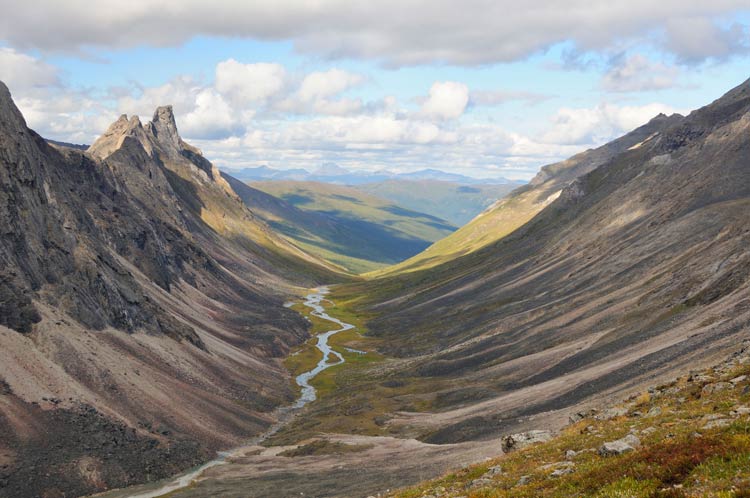
Interesting facts about Gates of the Arctic National Park and Preserve
- One of the Wildest Parks in the World
The Gates of the Arctic National Park and Preserve is one of the wildest and most remote national parks in the world, with no roads leading into the park and limited access by air or river. - Oldest Continuously Inhabited Place in the US
The park is located in the Brooks Range, which is the oldest continuously inhabited place in the United States. Native peoples have lived in the area for thousands of years and have a deep spiritual connection to the land. - Home to the Caribou Migration
The park is home to the Central Arctic Caribou Herd, one of the largest migratory herds of caribou in the world, with an estimated population of over 200,000 animals. - Unspoiled Wilderness
The park is home to some of the most pristine wilderness in the world, with vast areas of tundra, glaciers, rivers, and mountains that remain largely unchanged by human activity. - A Haven for Wildlife
The park is a haven for wildlife, with over 20 species of mammals, including caribou, grizzly bears, and wolves, and hundreds of species of birds, fish, and insects. - A Park Without Trails
Unlike many national parks, the Gates of the Arctic National Park and Preserve has no trails or designated campsites. Visitors are encouraged to explore the park on their own, using topographic maps and compass to navigate the rugged terrain. - A Unique Adventure Destination
With its remote location, rugged terrain, and diverse wildlife, the Gates of the Arctic National Park and Preserve offers a truly unique and challenging adventure destination for visitors seeking a wilderness experience unlike any other.
These facts help to demonstrate the incredible natural beauty, ecological value, and cultural significance of the Gates of the Arctic National Park and Preserve, and highlight why it is considered one of the wildest and most remote national parks in the world.

Q&A (questions and answers) about Gates of the Arctic National Park and Preserve
Q: Where are the Gates of the Arctic National Park and Preserve located?
A: The Gates of the Arctic National Park and Preserve is located in northern Alaska, in the Brooks Range of the Arctic Circle.
Q: How big is the park?
A: The park covers an area of 8,472,506 acres (13,238 sq mi; 34,287 km2)
Q: What is the elevation range of the park?
A: The park’s elevation ranges from 500 feet (152 m) to over 8,000 feet (2,438 m) above sea level.
Q: How many visitors does the park receive each year?
A: The park receives an average of approximately 10,000 visitors per year, with most visitors coming in the summer months.
Q: How is the park accessed?
A: The park is located in a remote area of Alaska and is only accessible by plane or by river. There are no roads that lead into the park.
Q: What wildlife can be found in the park?
A: The park is home to an estimated 10,000 caribou, hundreds of grizzly bears, and thousands of other species of wildlife, including birds, fish, and insects.
Q: What are some unique features of the park?
A: The park is unique in that it is one of the wildest and most remote national parks in the world, with no roads leading into the park and limited access by air or river. It also has no trails or designated campsites and is a haven for wildlife, with vast areas of tundra, glaciers, rivers, and mountains that remain largely unchanged by human activity.
Q: What is the budget for the park?
A: The annual budget for the park is approximately $4 million.
Q: What makes the park a unique adventure destination?
A: With its remote location, rugged terrain, and diverse wildlife, the Gates of the Arctic National Park and Preserve offers a truly unique and challenging adventure destination for visitors seeking a wilderness experience unlike any other.
